#specialcollections
Text
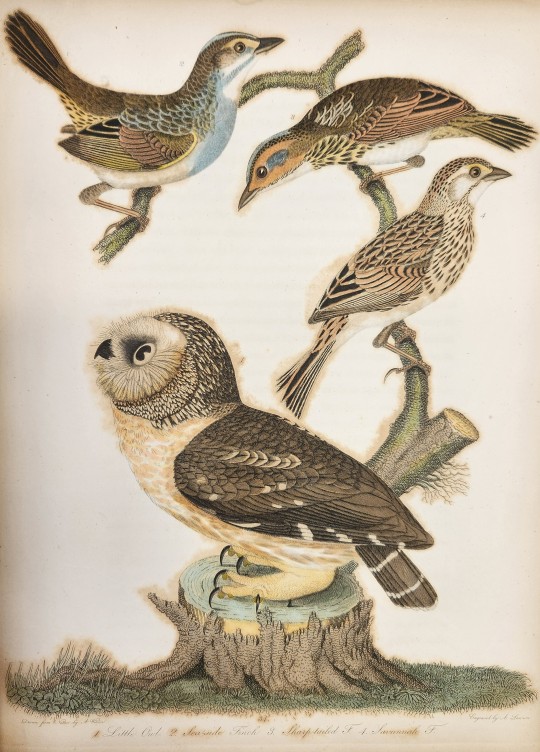
From: Wilson, Alexander, 1766-1813. American ornithology, or, The natural history of the birds of the United States. Philadelphia : Bradford and Inskeep, 1808-1825
QL674 .W76
#motivationowlmonday#owl#littleowl#birdsofprey#finches#early19thcentury#ornithology#natureillustration#birds#alexanderwilson#rarebooks#specialcollections#libraryofva#northamericanbirds
5K notes
·
View notes
Photo

#WordyWednesday
Perfect binding: A misleading term for books that have been “bound” by gluing a series of independent sheets directly to the spine of the book rather than sewing or gluing gatherings in place. (A perfect-bound book effectively has all of its pages tipped in.) This is common in modern paperbacks and results in books that can easily fall apart once the glue gives out and are nearly impossible to repair afterwards. It is a pernicious practice that only has its cheapness to recommend it.
Image: Packer, Nancy Huddleston. Small moments. Urbana: University of Illinois Press, 1976. PS3566.A318 S5 1976
(via Page — Pulpboard · Rare Books: A Glossary · Special Collections and Archives)
#wordy wednesday#wordywednesday#john henry#special collections#specialcollections#rare books#rarebooks#bookhistory#bookbinding#perfect bound
57 notes
·
View notes
Text
#VoicesFromTheStacks

image taken from Iowa Now.
Bill Sackter was born in St. Paul, Minnesota in 1913, born to Russian Jewish immigrant parents. His father passed when he was 7 due to the Spanish flu, and the same year Sackter struggled in school. After taking a mandatory intelligence test, the state sentenced a verdict that placed him in the Faribault State School for the Feeble-Minded and Epileptic. He stayed there for 44 years.
In 1964, when new treatments were being introduced for people with disabilities, Sackter was moved to a halfway house where he worked to support himself, and made friends with filmmaker Barry Morrow and his wife. As their friendship evolved, Marrow became Sackter's guardian, and when Marrow got a job at the University of Iowa, Sackter followed him to Iowa City where he became the proprietor of Wild Bill's Coffee shop.
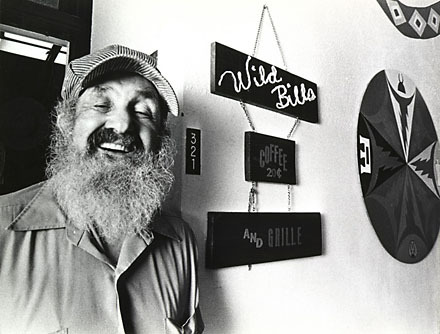
image taken from The Iowa Source
Wild Bill's Coffee Shop -- The late Tom Walz, a former director and professor in the UI School of Social work, created Wild Bill's Coffee Shop in 1975 to provide work for Sackter. Walz put him in charge of running the small coffee service located in North Hall. The coffee shop employed individuals with disabilities and served as both a job site for them and a learning lab for social work students.
In 2021, 46 years of service, the shop determined that because other coffee shops and kiosks in the area were hiring individuals with disabilities, that they would close down the coffee shop and instead make the now renamed "Wild Bill's" into a "community space, makers' space, and classroom" and that the space will still "collaborate with the disabilities community to include people with disabilities in the school’s social justice advocacy, and carry on the legacy of innovative social work faculty who came before."
Apart from the coffee shop, Bill Sackter was busy working with media groups that were interested in his life. Walz created a written biography about him, while Marrow co-wrote a movie about his life titled Bill (1981). That movie did so well it earned a sequel: Bill on His Own (1983). From the movie Bill, here at UIowa we have the Emmy and the Emmy Award video that the movie won. We also have the documentary that was made about Sackter's life titled "A Friend Indeed – The Bill Sackter Story."

Dennis Quaid (actor), Sactker, and Morrow accepting Golden Globe from the Iowa Digital Library.
More about Bill Sackter and the history of Wild Bill's Coffee Shop can be found here and here on our Iowa Digital Library!
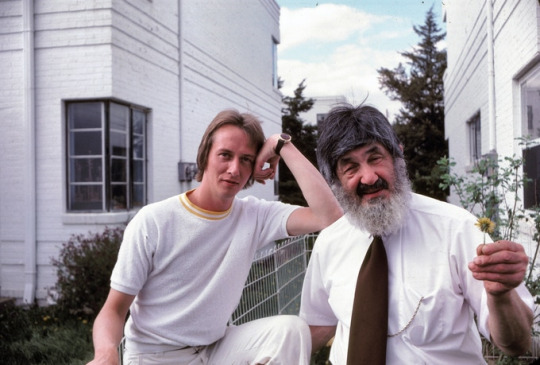
Morrow & Sacktner, image taken from Kickstarter.
We also have other collections relating to disability and disability activism, which can be found by searching here.
Did you know..
that according to the CDC, 1 in 4 adults in the US have some type of disability, 1 in 4 adults (45-64) have not had a routine check-up in the past year, 1 in 3 (18-44) adults with disabilities have an unmet healthcare need because of costs, don't have a usual health care provider, and that many individuals with disabilities are unable to get married without losing their benefits? Learn more from activists Alice Wong, Haben Girma, and the late Evelyne Jobe Villines.
At the University of Iowa, we also have services at the student level [UI Students for Disability Advocacy & Awareness (UISDAA)] and institutional level [Student Disability Services (SDS)].

Gif taken from Giphy.
Happy Disability Pride Month!
-Matrice Y., Special Collections, Olson Graduate Assistant.
#disability pride month#special collections#uiowa#libraries#uiowaspecialcollections#voicesfromthestacks#specialcollections#university of iowa#bill sackter#wild bill's#social work
99 notes
·
View notes
Photo
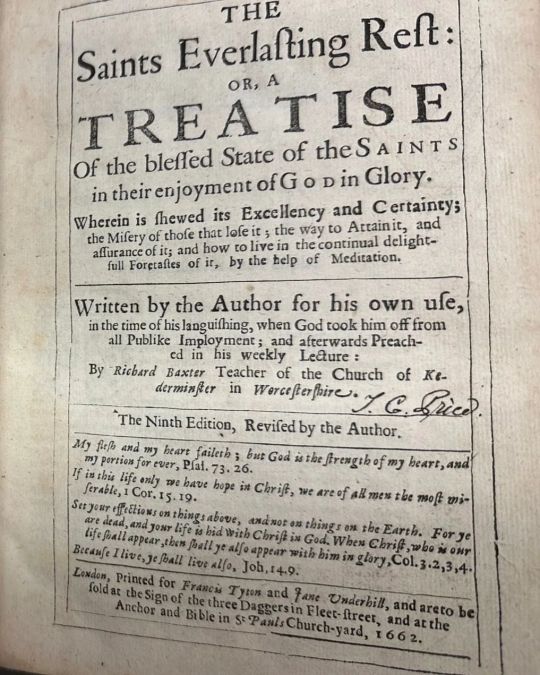
A manuscript copy of the engraved title page of "The Saints Everlasting Rest" by Richard Baxter was found in Baxter's ninth edition from 1662. The ink drawing translates the original Latin text into English. Call number 237.4 B33s1662 #specialcollections #rarebooks #oldbooks #peoplewhocandraw #manuscript https://www.instagram.com/p/ClmYSw5JUl9/?igshid=NGJjMDIxMWI=
12 notes
·
View notes
Text
Happy British Tea Day (April 21st)! Steep in this interesting bit of tea history and these tea titles from your James Smith Noel Collection!
It is difficult to believe that the United Kingdom have not always been the hosts of tea though it is now deeply woven into English culture and society. It was not until exploration and trade opened to the Far East (Asia) when the later Elizabethans began to hear tales of brewed cups of chai leaves in Japan and China through the East India Company in 1598. There is an urban legend of when tea first arrived in England. Lady Mary Douglas of London was given a dried bouquet by her lover , a member of the trading company , who had returned from China with the bouquet. Lady Mary dunked the collection of faded blossoms into a vase of water. Then during the night she awoke thirsty and drank the vase water. It is said that the bouquet’s blossoms were from a tea plant, however, there is no date that correlates with the urban legend.
The East India Company began to introduce tea to England and other parts of Europe in the mid-1600s. Tea was first offered for commercial sale to the public in 1657 at a coffee house in Exchange Alley in London. The first coffee house, introduced by the Greeks to the English around 1650, was opened in Oxford. Tea and coffee are common drinks for the English though the type of coffee being popularized among the English was the Turkish style of coffee, and also (hot) chocolate was being offered and popularized. It was in 1666 when the East India Company gifted 23 pounds of a “rare” type of tea to the king and also to the Russian tsar.
The use of “cupp of tee (tea)” was first noted by a clerk of British navy, Samuel Pepys on September 25, 1660, when he met with his colleagues. And his wife had her first cup of tea seven years later according to his personal writings on June 29th. And so the rise of tea drinking society began and the enjoyment of coffee began to fade out thanks to Charles II marriage to the Portuguese Princess Catherine in 1662. While tea-drinking was already a custom of the Portuguese royals and nobility, Princess Catherine’s dowry included rare teas such as Tangier and Bombay for court use. Tea began to become a regular import for commercial use in 1669 with the East India Company.
Americans are not unfamiliar with the history of unfair taxing of common goods. Let us remember the Boston Tea Party when crates of tea were tossed into the Boston Harbor as a reaction to taxes from the crown! Britain also taxed tea and chocolate in 1660 and the taxes on tea gradually increased until the 1720s when the import tax was lifted since tea was a common drink of the higher social class, until the 1730s.
It was until the 1730s that tea was a popular drink held at court and coffee houses in England. However, the common family was beginning to enjoy a cup of tea at their daily table. This tea was normally black tea which did not have any additional tax unlike the herbal counterpart of green tea. Another interesting closing fact is that tea joined the smuggling trade along with tobacco, silk, and brandy.
Woodward, N. H. “The English Discover Tea.” In Teas of the world. New York: Collier, 1980: pp. 48-70.

Here is a small selection of books about the United Kingdom, the Boston Tea Party, and Tea. In celebration of British Tea day check the J.S. Noel Collection for other musings about tea! (Tea set was loaned by one of our catalogers)
https://bit.ly/3K1wxQf
https://bit.ly/3EDaXjP
https://bit.ly/36CEZrE
https://bit.ly/3xFWe6x
23 notes
·
View notes
Text
Harmonia Macrocosmica or Atlas Universalis Et Novus
This post was written by Natasha Skorupski, a Department of Classics Intern in Archives & Special Collections for the Spring of 2022.
Archives & Special Collections at the University of Pittsburgh holds many rare books and printed materials. During my internship with the Hillman library and the Classics Department, I came across an interesting book: Harmonia Macrocosmica or Atlas Universalis Et Novus created by Andreas Cellarius and published in 1708. However, it was not the words or even the illustrations that interested me; instead I was taken by how the book was printed. The images and texts seemed to be printed on one page and then that page was bound to another.


(Above) If you look very closely you can see a faded line parallel to the final bordering black line. The faded line marks where the page, containing the colored print and illustrations, is adhered to the blank page that is part of the bound book.
For hours I searched trying to figure out the name and more about this process. Eventually I came upon a small bit of information. Tip in (or tipping-in) printing is when a printed sheet is inserted into a book or manuscript by gluing (or stapling) it to an existing page. However, the printed page is not part of the book’s binding (Glossary of Book Terms). This was exactly what I was looking for, except after discovering this, I could find absolutely nothing directly about its history. From searching many different sources and putting pieces together, I came across this conclusion—the original printed pages were mass produced and then (at least for this manuscript) the illustrations were hand painted in, and the paint looks quite similar to a watercolor based paint.
Having the pages as individual sheets allows for multiple people to be working on the pages at once, and also allows the artist to immediately move to the next page without having to wait around for the paint to dry. Whenever the paint on the page has dried, it can be bound or glued to a bound book. This is a slower process as only one page can be done at a time, and the glue/paste binding the pages together must fully dry before one is able to move onto the next page. While it was hard finding out about the background of these types of books, there were numerous resources on how to paste bookplates and individual pages into a book.
The process of binding pages together is extremely simple and is precisely what you think it would be. There are tiny variations in the process, but I will explain to you the one I found on the website of wood engraver and illustrator Andy English. The materials he used were a bookplate, scrap paper, pencil, small brush (good enough to avoid bristles detaching themselves), glue, a soft cleaning cloth, and a container to mix in (English).
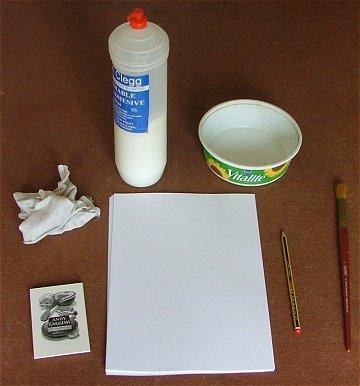
(Above) Image from “Pasting Bookplates into Your Books” by Andy English, 2021.
He recommended PVA (Polyvinyl acetate) glue as it is easily thinned with water, flexible, and acid free. This is important as his mixture is about 60% glue and 40% water, with is mixed in the container. However, he notes that he uses a little less water for paperbacks. Before you start, make sure to wash your hands and keep them clean at all stages. Take the bookplate/page you wish to attach and place it on the book/page where you want it. If you wish, you may mark in faint pencil marks the corners of where the attached page will go. Once the mixture is made, place the bookplate/page face down on a clean piece of scrap paper (photocopy paper is perfect). Take some paste on the brush and (holding the plate firmly with a finger) brush the paste on the bookplate/page from the center going outwards (English).

(Above) Image from “Pasting Bookplates into Your Books” by Andy English, 2021.
It is important not to overload the plate with paste! Once the paste is on, take the bookplate/page and hold it above where you want to place it in the book. Then carefully, but deliberately, place it onto the book and smooth it down. If there is a little too much glue, use a clean cloth (lightly dampen with clean water) to wipe it carefully and use light pressure to avoid damaging the surface of the paper (English).

(Above) Image from “Pasting Bookplates into Your Books” by Andy English, 2021.
Lastly, leave the book open until it has thoroughly dried.
Works Cited
English, Andy. “Pasting Bookplates into Your Books.” Pasting In Your Bookplates, PB Hosts, 2021, https://www.andyenglish.com/pasting-in-your-bookplates.
“Glossary of Book Terms.” AbeBooks, AbeBooks, 28 Mar. 2022, https://www.abebooks.com/books/rarebooks/collecting-guide/understanding-rare-books/glossary.shtml#T.
12 notes
·
View notes
Photo

Prof. San Martin's ART 195 Latin American Art class stopped by the Linderman Library Special Collections last week to get a closer look at the Francis Magnin collection provided by Archives and Special Collections Librarian Illhan Citak. #lehighu #art #arthistory #architecture #design #specialcollections #archives (at Lehigh University Art, Architecture and Design) https://www.instagram.com/p/Cisbu9pOIKN/?igshid=NGJjMDIxMWI=
0 notes
Photo

New Patron episode: the Kansas Room Special Collections at the Kansas City Kansas Public Library featuring Librarian Anne Lacey. @kckpubliclibrary Homegrown KC is a podcast dedicated to exploring Kansas City's fascinating history and sharing stories from its rich past. It is available wherever podcasts can be found including but not limited to Audible, Amazon Music, Google Music, Pandora, Spotify, Apple Podcasts, Facebook, Vurbl, and Audea. To become a patron supporter subscribe to redcircle.com/homegrownkc or patreon.com/homegrownkc. Subscribers get access to exclusive bonus episodes featuring other local historians, archivits, and museum professionals. They also receive an item from the merchandise store valued at 5$ or less, and a shout out on every episode and social media post. Or you can give a one time donation at redcircle.com/homegrownkc or Ko-fi.com/homegrownkc. All donors will receive a shout out. And 1% of all Ko-Fi donations will go to fight climate change. To see what merchandise is available, go to zazzle.com/store/homegrown_kc_store. For more information on each topic, visit my website: homegrownkc.wordpress.com. and sign up for my monthly newsletter on my website as well. Like, follow, and subscribe to the show on Facebook, Instagram, Twitter, Pinterest, Tumblr, and Youtube. Rate and Review the show where you listen, especially on Apple Podcasts. Thank you Bjorn, Joan, and Jeanna for your continued support. Thanks also goes to Sarah McCombs for the creation of my logo; the Dear Misses for use of their song Kansas City, as the intro and outer music of the show; to local libraries; and to all my wonderful listeners. Cheers! #homegrownkc #communityhistory #stateandlocalhistory #kchistory #kcproud #historypodcast #podcastersofinstagram #specialcollections #kansasroom #kckpubliclibrary https://www.instagram.com/p/CeMfK1oJT1p/?igshid=NGJjMDIxMWI=
#homegrownkc#communityhistory#stateandlocalhistory#kchistory#kcproud#historypodcast#podcastersofinstagram#specialcollections#kansasroom#kckpubliclibrary
0 notes
Text





SELEUSS - HOLIDAY COLLECTION - V3
THIS 6 PIECE HOLIDAY COLLECTION HAS THE FOLLOWING TRUFFLES:
MUCHEN MUNICH 38% (MILK CHOCOLATE TRUFFLE)
GRAND MARNIER
EIREANN D'OR (GLENCARA IRISH CREAM)
TOM & JERRY: PUMPKIN SPICE (REAL PUMPKINS)
ACER ORGANIC MAPLE TRUFFLE
ORANGE BLOSSOM SPECIAL (HONEY)





















#seleuss#seleusschocolates#seleussholidaycollection#seleussholiday#seleusslactee#seleusstruffles#specialcollection#special collections
0 notes
Text








SELEUSS - 12PC Special Truffle Collection
A new set of our award winning chocolate truffle in a 12 piece giftbox will be available this Thursday! This box contains the following truffles:
Rosa Mundi (Rose Petal infused)
Eireann Irish Cream (Eireann d'Or) The Golden Kavanagh
Brazilian Organic Honey
Orange Blossom Special (Honey)
ELIXIR de Framboise: Chambord
ELIXIR: VSOP Napoleon Brandy
Figues et Oranges (Figs & Oranges)
Pepper's Strawberries & Cream
Buckwheat Blossom Honey
Dunkel Schwarz (Schwartz) 100%
https://www.instagram.com/seleuss/
#seleuss#seleusschocolates#specialcollection#bestchocolatesinseattle#seattlesbestchocolates#superiortasteaward#seattlechocolatiers#hautechocolate#seattlechocolateshop#chocolatetruffles#seattle
0 notes
Text


From: Beaumont, Cyril William. The Mysterious Toyshop : A Fairy Tale. London: C. W. Beaumont, 1924. Print.
Z239.2.B4 B3
#christmas#toy shop#toys#holidays#holiday season#fairy tale#1920s#libraryofva#specialcollections#rarebooks
183 notes
·
View notes
Text
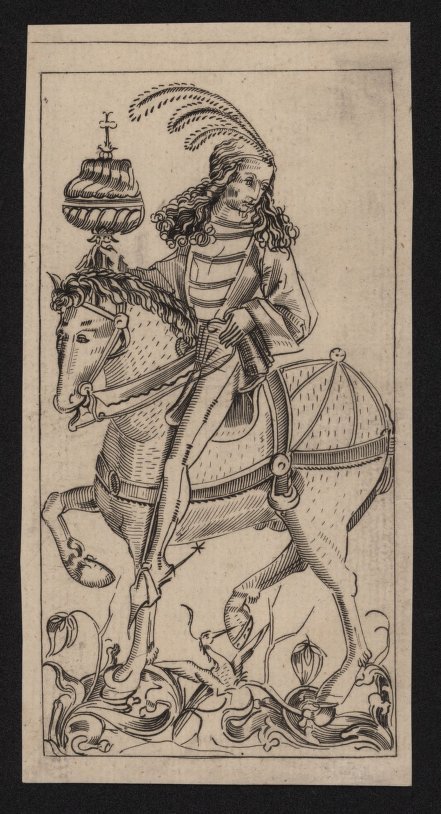



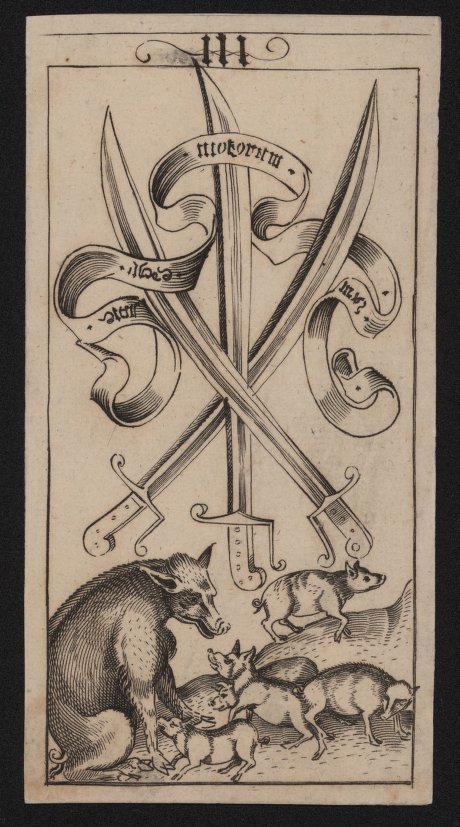
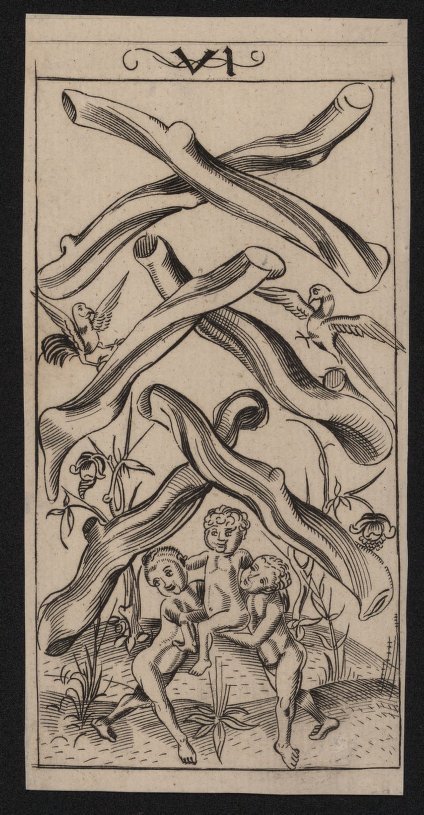
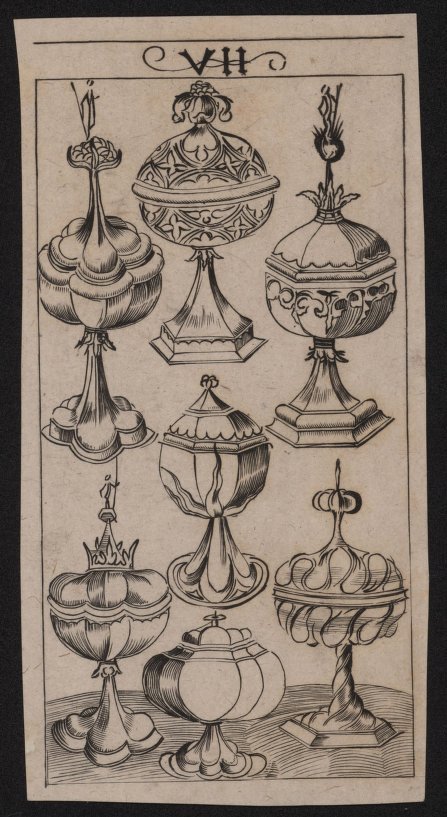
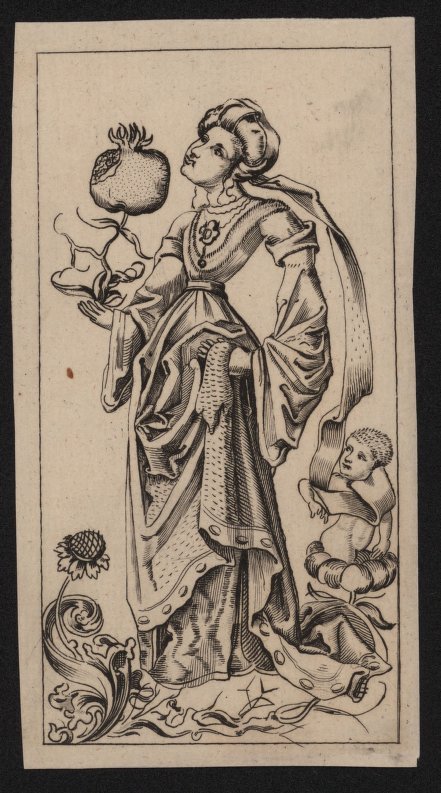
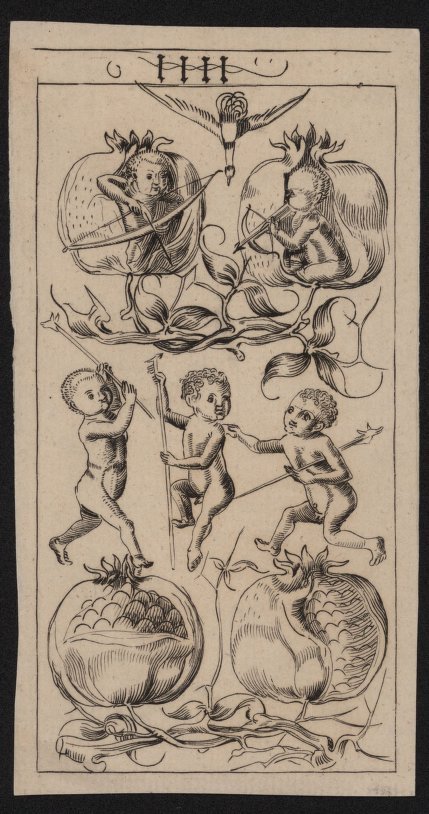
This deck of playing cards is from a series engraved in southern Germany ca. 1496, and is believed to commemorate the marriage in that year of the future King Philip I of Spain (son of the Holy Roman Emperor Maximilian I) to Joanna the Mad (daughter of King Ferdinand of Aragon and Queen Isabella of Castile). Instead of hearts, spades, clubs, and diamonds, these cards use chalices, swords, pomegranates, and polo sticks.
The University Libraries and a private collector are partnering to make an extensive collection of medieval and early modern materials available to scholarship through digitization. These materials do not belong to the Libraries, but the scans are freely available for use in research and teaching. See more in the University of Missouri Digital Library.
#playing cards#engraving#1400s#1500s#art history#renaissance#printmaking#special collections#specialcollections#university of missouri#mizzou#private collection#columbia mo
303 notes
·
View notes
Text
#VoicesFromTheStacks
It's the last day of National Native American Heritage Month and so today, from our collections, we highlight our Native American Student Association (NASA) Records!

Images in the collage above taken from the 1995-96 folder of photographs.
The Native American Student Association, originally called The American Indian Student Association, was established in the fall of 1989, and renamed in 2013. Our collection features images from different Powwows, and club events, as well as programs! Powwows, according to the programs in the collection, are a "gathering, a social occasion, and a time for Indian peoples to gather together to sing and dance as well as honor the heritage that has been passed down to them from their ancestors. Modern powwow dancing is an entity unto itself. The different styles are derived from modern traditional dances of the various tribes but the individual dances are not specific to any one tribe-- though they are often associated with a particular geographical area."
We have a variety of the programs from different powwows, ranging from 1991-2014! Be sure to check them out. We also have club data, such as the constitution from 1993-95 and newspaper coverage!



NASA, is also still an active organization! To learn more about them, you can follow them on their social media platoforms:
Instagram
Facebook
Youtube
Lastly, while we at The University of Iowa have an Acknowledgement of Land and Sovereignty, we understand that this is not enough. We are actively working to ensure subject headings are correct for our collections, and that representation is presented properly and respectively.
--Matrice Y., Special Collections, Olson Graduate Assistant.
#uiowa#libraries#special collections#university of iowa#specialcollections#uiowaspecialcollections#voicesfromthestacks#native american#indigenous americans#indigenous people#native american heritage month
27 notes
·
View notes
Photo

☃️The RBML books were all dressed up in their finest velvet bindings when Uncle Jack (London) decided to crash the party in his best hipster flannel 🌲 So, what's the dress code for your books this holiday season? Season's greetings from the RBML team! #specialcollections #rarebooks #velvetbinding #jacklondon #callofthewild #medievalmanuscript #milton #ptolemy https://www.instagram.com/p/CmZ6MkFJd7M/?igshid=NGJjMDIxMWI=
#specialcollections#rarebooks#velvetbinding#jacklondon#callofthewild#medievalmanuscript#milton#ptolemy
15 notes
·
View notes
Text

Welcome back!
This week many colleges across the United States of America, including our very own Louisiana State University at Shreveport, start the fall semester and welcome new and returning students to campus. To commemorate the start of classes and a new school year, we found some intriguing entries in our library’s dictionary of college terms and slang from the mid-nineteenth century. We hope you enjoy learning about university life in the 1850s and how things have–and haven’t?–changed in the past 170 years.
And most importantly, we wish the best of luck to college students this semester, especially our own LSUS Pilots!
Doctor's note, with pretentious classical Latin flair
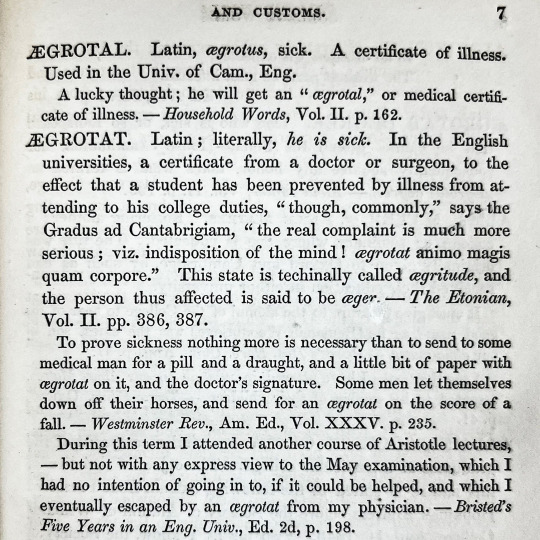
Textbook funerals
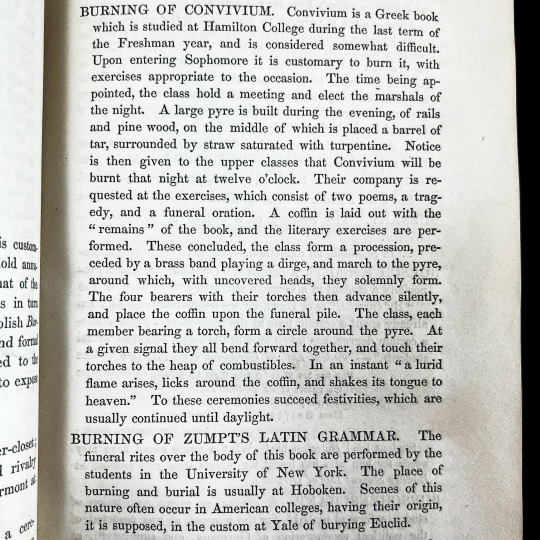
Celebrate the end of finals...with a merry-go-round ritual?!
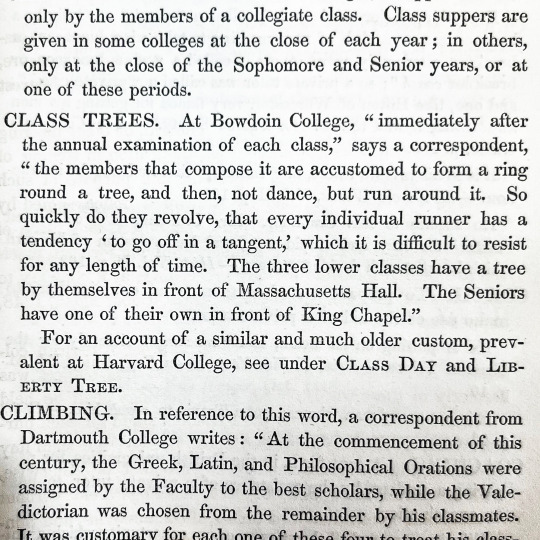
Not one, but TWO whole pages dedicated to cramming terminology

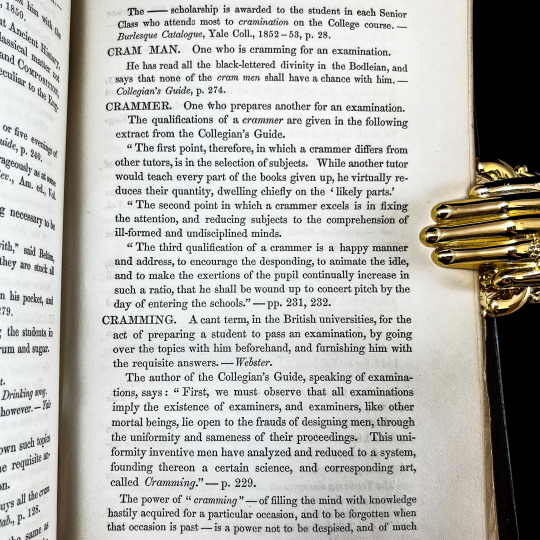
A "farcical proceeding" for students, a "leaf of tragedy" for parents/guardians.

A self-defeating way to spend study breaks
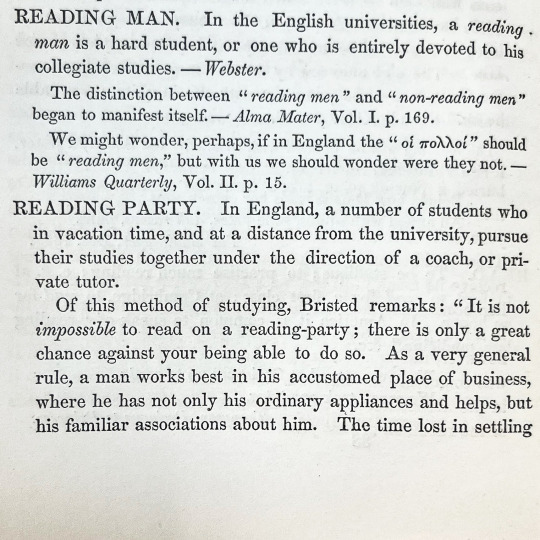
Image of Magdalen College from: Combe, William. A History of the University of Oxford. London: R. Ackermann et al., 1814. Volume I. Catalog record: https://bit.ly/3Amw2gY
Dictionary entries from: Hall, Benjamin. A Collection of College Words and Customs. Cambridge: John Bartlett, 1856. Catalog record: https://bit.ly/3pFgkbJ
7 notes
·
View notes
Text
“I started to wonder about the history of Latin”
This post was written by Natasha Skorupski, a Department of Classics Intern in Archives & Special Collections for the Spring of 2022.
During my internship with the Hillman library and the Classics Department of the University of Pittsburgh I worked in the Archives & Special Collections, looking over Latin manuscripts. While looking through these I started to wonder about the history of Latin and how the spoken language fell yet the written word continued.
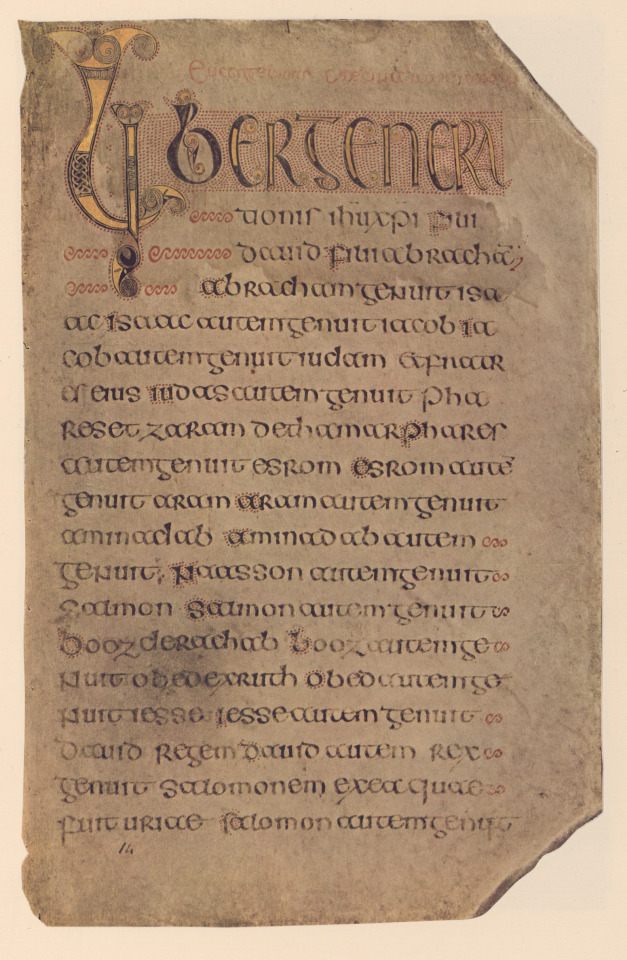
(Above) Evangeliorum quattuor Codex Durmachensis or The Book of Durrow, Olten: Urs Graf; sole distributors in the United States: P.C. Duschnes, New York by Arturus Aston Luce, 1960 facsimile. Archives & Special Collections, University of Pittsburgh Library System.
Due to that I have found out the following information. Latin is thought to be derived from ancient Greek and Italic languages. Italy used to be made up of many different tribes that spoke many different languages, and these languages are called Italic languages today. The first evidence of Latin is an inscription on a cloak pin that was found from the sixth century BCE. On the pin it says, “Manius me fhefhaked Numasioi” which translates to “Manius made me [this] for Numerius”. The first literary records of Latin have been dated back to 250-100 BCE. The popularity of Latin increased with the rise of Roman political power. This spread was initially in Italy and then continued to most of Western Europe and parts of coastal Africa.
Latin has been classified into three groups. There is the written Latin, oratorical Latin (public speaking), and colloquial Latin (common speaking) (When Did Latin Die? and Why). The later Latin saw the greatest variation in its use and continuous divergence from it eventually evolved into Vulgar Latin. From Vulgar Latin we get the Romance Languages we know today, which include Italian, French, Spanish, Portuguese and Romanian.
The beginning of the end of the western Roman empire occurred in 395 CE. It fell for multiple reasons, some of them being military invasions, economic troubles, overreliance on enslaved labor, overexpansion and overspending of the military, political instability and corruption, among others (Andrews). With this fall came the decline of colloquial and Vulgar Latin.
There was a small period of resurrection for Latin under the “Roman Emperor” Charlemagne during 768-814AD. At this point in time, Latin was spoken, written, and read predominantly in religious settings as Italian, French and Spanish were rapidly evolving, allowing for a great decline of Latin (When Did Latin Die? and Why). During the mid-14th century, the Black Death Plague occurred. It killed millions of people, including numerous scholars and professors, creating a negative ripple effect on the entire education system (When Did Latin Die? and Why).
During the 15th and 16th centuries, there was another slight resurgence as people started to read Latin literature from classical authors. This was the time of the renaissance that spread mostly through Italy, France and later Britain. With the greater developments in science, Latin terminology was put into place as a way to regulate findings and encourage international research (When Did Latin Die? and Why).

(Above) Cosmographia Petri Apiani. Antwerp: Veneunt Antuerpiæ Gregorio Bontio sub Scuto Basiliensi .. by P. & Gemma Apian, 1553. Archives & Special Collections, University of Pittsburgh Library System.
Latin was seen as a status symbol at this point—you were seen as educated if you could read and write it. Though it was no longer spoken, it was used predominantly in literature and religion. Until the 19th century, Latin was a requirement for all that attended college. College was usually attended by white males of a privileged background (When Did Latin Die? and Why). However, this changed around the mid 1960s when the younger generation decided they also shared the right to higher education.
Today very few people can read Latin, even fewer can write it, and almost no one speaks it. However, it is one of the official languages of Vatican City and plays a vital role in Catholicism. Latin words are all over Catholic scripture and there are many recited terms that come from it (Is Latin a Dead Language? Let's Explore Why?).

(Above) Inni sacri, per tutto l’anno : à quattro voci pieni, da cantarsi con l’organo e senza ... : opera quarta by G. A Silvani, 1705. Archives & Special Collections, University of Pittsburgh Library System.
A fun fact, Pope Francis is the most influential Latin speaker today with about 40 million followers between his multiple accounts that vary in languages. One of these accounts posts solely in Latin! With his bio stating “Tuus adventus in paginam publicam Papae Francisci breviloquentis optatissimus est” which roughly translates to “Your arrival to the public page of the Tweeting Pope Francis is most welcome” (Pope Francis).
Latin words also dominate in modern science as names of medicine, drugs, diseases, body parts, and it is especially used in binomial nomenclature (the system for naming plants and animals). It is also greatly prevalent in the legal field. Amicus curiae, habeas corpus, and ex post facto being just a few of the more common ones. A fun fact is the jury comes from the Latin word “jurare” meaning “to swear” (Is Latin a Dead Language? Let's Explore Why?).
Latin is a dead language as it is no longer spoken. However it is not extinct, and still can be encountered more than most people in the world today would expect.
Works Cited
Andrews, Evan. “8 Reasons Why Rome Fell.” History.com, A&E Television Networks, 14 Jan. 2014, https://www.history.com/news/8-reasons-why-rome-fell.
“Is Latin a Dead Language? Let's Explore Why?” The Language Doctors, 14 Mar. 2022, https://thelanguagedoctors.org/is-latin-a-dead-language/.
Pope Francis. “Pope Francis Tweeter Account.” Twitter, Twitter, 23 Apr. 2022, https://twitter.com/pontifex_ln?lang=en.
“When Did Latin Die? and Why?” Global Language Services, Global Language Services Ltd, 3 Feb. 2022, https://www.globallanguageservices.co.uk/did-latin-die/.
12 notes
·
View notes